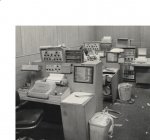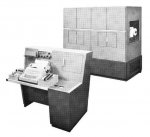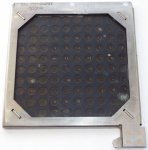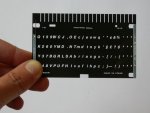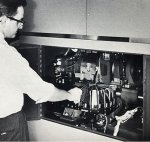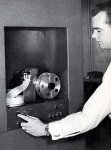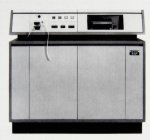Oh, the memories. I saw cards and readers, during a field trip in junior high, but the real fun was sitting at a console with a TV screen (seemed like Star Trek) and writing a simple computer program. This was at University of Washington's Computer Science school (1970?); I think we were test subjects, actually, for researchers interested in human-machine interactions. Funny story: there was also an area full of teletype machines, but as we were led inside somebody ushered us out, telling us that it was too noisy because "Mr. Allen and his friends" had "taken over the lab again". Could it be?
In high school, I was introduced to graphic arts. I had a part-time job at a lithography printshop, during my senior year. That's where I was introduced to a Phototypositor. Two years later, my boss purchased a Mergenthaler Linofilm typesetting system from a defunct, local newspaper. The keyboard was the size of a washing machine! It produced a roll of punched tape (15-hole width). No programming language; just "bell" codes for commands. The paper tape was read by a Rube Goldberg-type machine (the size of a small locomotive), and the type was set photographically using fonts made of glass! That system was built in the 1950s. There were no integrated circuits; half the hardware was radio tubes and bundled wires. There was no way to save work; small edits could be to the paper tape, by covering certain holes and punching new ones by hand. (Reading those tapes was like learning braille.) Mostly, we made edits by retyping the job from scratch.
I moved on to work for Cole & Weber Advertising, in the early 80s, doing pre-press graphic arts (in a shop named Silas Marner). I produced high-quality typography using a much newer Mergenthaler system: one-fourth the size, macro programming language, electronic keyboard with screen, 8-inch floppy disks for storing jobs, and a 6-hole paper punch to interface with the typesetter. On day one, I was amazed at the new technology. You could save jobs (!) on a floppy or by feeding the tape back into the keyboard.

